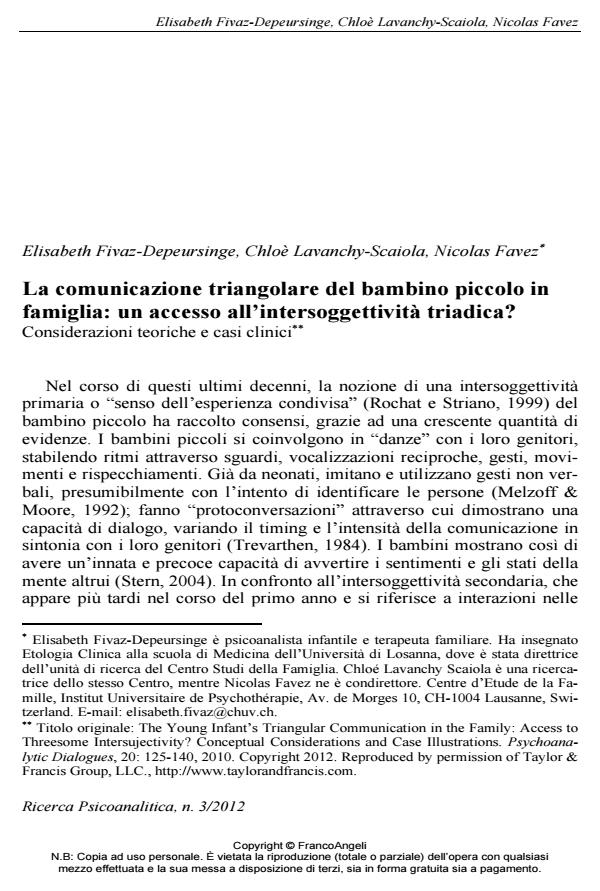La comunicazione triangolare del bambino piccolo in famiglia: un accesso all’intersoggettività triadica? Considerazioni teoriche e casi clinici
Journal title RICERCA PSICOANALITICA
Author/s Elisabeth Fivaz-Depeursinge, Chloè Lavanchy-Scaiola, Nicolas Favez
Publishing Year 2012 Issue 2012/3
Language Italian Pages 24 P. 65-88 File size 2117 KB
DOI 10.3280/RPR2012-003008
DOI is like a bar code for intellectual property: to have more infomation
click here
Below, you can see the article first page
If you want to buy this article in PDF format, you can do it, following the instructions to buy download credits

FrancoAngeli is member of Publishers International Linking Association, Inc (PILA), a not-for-profit association which run the CrossRef service enabling links to and from online scholarly content.
During these last decades, the notion of primary intersubjectivity has gained acceptance among developmentalists and clinicians. But a new challenge is put out to our models by recent findings on the triangular competence of the very young infant, or her capacity to simultaneously communicate with two partners at a time. This discovery raises the question of a collective form of intersubjectivity. Findings on the triangular competence of the 3- to 4-month-old interactions with father and mother in different contexts of the Lausanne trilogue play situation are reviewed and illustrated, with a view to examine whether it is based on a diadic or triangular program and whether conditions for a threesome form of primary intersubjectivity are fulfilled. The discussion focuses on the revisions of the theory of intersubjectivity, of developmental theory, and of clinical practice these findings call for, pointing toward a three-person psychology too.
Keywords: Couple, family, dual, becoming, ego-subject, complexity
Elisabeth Fivaz-Depeursinge, Chloè Lavanchy-Scaiola, Nicolas Favez, La comunicazione triangolare del bambino piccolo in famiglia: un accesso all’intersoggettività triadica? Considerazioni teoriche e casi clinici in "RICERCA PSICOANALITICA" 3/2012, pp 65-88, DOI: 10.3280/RPR2012-003008